#Israel Silvestre
Text
Olhando para trás, olhando para frente
O autor de Eclesiastes passou muito tempo explorando o sentido da vida. Este “Mestre”, um rei de Israel em Jerusalém (tradicionalmente identificado como Rei Salomão), tentou de tudo na sua busca por significado — poder e prestígio, riqueza e mulheres. E, ainda assim, ele observou que gerações vêm e gerações vão, mas tudo parece ser um ciclo interminável…
Trabalhamos duro, mas eventualmente morremos.
Adquirimos coisas, mas eventualmente morremos.
Formamos famílias, mas eventualmente morremos.
Quer passemos a vida a fazer o bem ou o mal, todos acabaremos por morrer.
Mas ele prossegue:
“Deus marcou o tempo certo para cada coisa. Ele nos deu o desejo de entender as coisas que já aconteceram e as que ainda vão acontecer, porém não nos deixa compreender completamente o que ele faz.”
Eclesiastes 3:11 NTLH
Quando você olha para um céu estrelado, segura um bebê recém-nascido nos braços ou caminha por um campo de flores silvestres, você deve se lembrar de algo maior – seu Criador.
Quando você estuda o que foi registrado na história humana ou até mesmo processa a própria vida, você tem vislumbres do quadro geral – mas ainda assim não consegue ver muita coisa.
Não é sua função saber tudo, mas é sua função confiar em Deus.
No final do livro, o Mestre partilha os seus pensamentos finais: “De tudo o que foi dito, a conclusão é esta: tema a Deus e obedeça aos seus mandamentos porque foi para isso que fomos criados” (Eclesiastes 12:13).
Quando você olha para trás neste ano, o que foi tremendo na sua vida? Mesmo que tenha sido desafiador ou doloroso, o que Deus lhe ensinou através disso?
Independentemente do que o passado ou o futuro reserva, você pode confiar que Deus está trabalhando — do começo ao fim.
4 notes
·
View notes
Text
"É certo que todas estas coisas são tão verdadeiras quanto possível, de modo que não podem ser negadas pelos judeus. No entanto, para sua maior confusão, é necessário provar por algum testemunho das Profecias que até mesmo o próprio Império Romano deveria estar sujeito ao nosso Senhor Jesus Cristo. Pois até Isaías mesmo, muito antes, proclamou isso no vigésimo sexto capítulo, dizendo: עיר עז לנו ישועה ישית חומות וחל: פתחו שערים ויבא גוי צדיק שמר אמנים יצר סמוך תצר שלום שלום כי בך בטוח: בטחו ביהוה עדי עד כי ביה יהוה צור עולמים: כי השח ישבי מרום קריה נשגבה ישפילנה ישפילה עד ארץ יגיענה עד עפר: תרמסנה רגל רגלי עני פעמי דלים: Isto é, "Nós vimos uma cidade forte, em que se pôs por Salvação muro e antemuro. Abri as portas, deixai entrar um povo justo, que respeita a fidelidade, que tem caráter firme e conserva a paz, porque tem confiança em vós. Tende sempre confiança no Senhor, porque o Senhor é o rochedo perene. Ele derrubou os que habitavam nas alturas e destruiu a cidade soberba; derrubou-a por terra e ao nível do chão a reduziu. Ela é calcada aos pés pelo Humilde, sob os passos dos indigentes." (Is 26,1-6). Não buscamos uma interpretação diferente dessas palavras senão a do Rabino Salomão (i.e. Rashi). Pois ele mesmo a interpreta assim:
"Nós vimos uma Cidade forte, em que se pôs por Salvação"; "O Salvador trará a Salvação".
E abaixo;
"'Ele destruiu a cidade soberba' - isto é, Roma e Itália - 'derrubou-a por terra e ao nível do chão a reduziu. Ela é calcada aos pés pelo Humilde (ani [עָנִ֖י])' - o Rei Messias, de quem fala Zacarias 9: 'Humilde (ani [עָנִי֙]) e montado num jumento'. Os 'passos dos indigentes' são Israel".
Esta glossa do R. Salomão que afirma nossa Fé é nosso próprio apoio. Pois então "O Humilde", isto é, o Rei Messias, humilhou Roma e Itália até a terra, quando o ápice do Império Romano, quase tocando os céus, humildemente sujeitou-se ao jugo da Fé Cristã, dobrando-se literalmente ao pescoço dos pobres e humildes, que seguiam os preceitos de Cristo. Mas então o passo dos necessitados, isto é, Israel, conforme a explicação do Rabino Salomão, calcará Roma mesma, quando, com a Pregação dos Apóstolos de Cristo, Pedro e Paulo, rejeitou totalmente a Idolatria, o culto, os prazeres e delícias que a Religião Cristã repudiou, submetendo-se completamente a Cristo. E então, quando Cristo conquistou o Império Romano (ele próprio se sujeitando a ele), certamente, principalmente quando Constantino, Imperador romano, e o imperador do mundo, após receber o Sacramento do Batismo, ser curado da lepra e recuperar a sanidade Divinamente, reconheceu Jesus Cristo como o Redentor e Salvador do mundo, o verdadeiro Rei dos reis, o único Senhor do Céu e da Terra, submetendo a Ele todo o Império Romano e até mesmo colocando a coroa de ouro mais puro e adornada com pedras preciosas e pérolas em sua própria cabeça, uma mitra imperial, ou seja, um diadema, que costumava ser usado em torno do pescoço imperial, uma túnica de púrpura, e todas as vestes imperiais, e com a dignidade imperial dos presidentes dos cavaleiros e cetros imperiais, juntamente com os sinais e estandartes, diversos ornamentos imperiais, e todo o esplendor e poder do ápice imperial; ele conferiu ao Bem-Aventurado Silvestre, então Vigário de Cristo, e a todos os seus Sucessores, como um presente. E ele próprio, com suas próprias mãos, colocou a mitra no sagrado topo da cabeça dele, e segurando as rédeas do cavalo em que o Papa estava montado, exibiu o ofício de cocheiro. E para que o Senado Cristão não brilhasse com menos glória do que o imperial, ele concedeu muitas e as maiores dignidades aos nobres senadores da Sagrada Igreja Romana, aos Cardeais, e, finalmente, tanto à Cidade de Roma, que era a cabeça do mundo e do Império, como à própria sede do Império, e a muitas províncias, cidades e lugares das regiões ocidentais, conferiu ao Sumo Pontífice Silvestre como vigário de Cristo, e ao Beatíssimo Pedro como seu Sucessor, e a seus Sucessores em perpetuidade, transferindo o Império Romano, que estava sujeito a Cristo, para as regiões Orientais. Todas essas coisas estão contidas neste edital imperial, e muitas outras também.
Portanto, o imperador dos romanos, que está acima de todos os reis e nações, isto é, em abelhas, e o imperador Adriano, pois é o príncipe do mundo e o senhor, e como está na Lex Rhodia, diz: "Ele é o príncipe do mundo desde o Senhor até os limites da terra". E os gregos o chamam com a maior precisão possível de dominador, pois ele domina sobre todos, e seu domínio não depende de ninguém, Nosso Senhor Jesus Cristo Rei Messias. Quem poderá, então, negar isso? Nosso Senhor Jesus Cristo, que presta serviço ao mesmo imperador e a todo o império romano, é provido, sobre todo o reino, todas as nações, e províncias, tendo o principado. E ele é verdadeiramente o Monarca de todo o mundo e o Rei dos reis, e o Senhor dos senhores. Pois, considerando este domínio universal sobre todo o mundo, o Imperador romano detém as coisas temporais, e o Romano Pontífice as Espirituais. Portanto, eu julgo apropriadamente que se aplique ao seguinte versículo do Gênesis 1: "Deus fez os dois grandes luminares; o maior para presidir o dia, e o menor para presidir a noite". Pois o que mais podem representar esses dois grandes luminares místicos senão o Sumo Pontífice e o Imperador? Um deles, como o sol, preside as coisas espirituais, e o outro, como a lua, preside as coisas temporais. Portanto, a conclusão é evidente: ambos devem exercer o domínio universal sobre o mundo inteiro. Se, portanto, o Império Romano só devia ser subjugado pelo Messias, e se ele próprio foi submetido ao nosso Senhor Jesus Cristo por tanto tempo, como já foi provado, então é uma consequência óbvia que Nosso Senhor Jesus Cristo é o Verdadeiro Messias."
- Pietro Galatino, "Opus de Arcanis Catholicæ Veritatis", Basileæ, 1550, páginas 292-294.
0 notes
Text
Pueblo Suyo Somos
Somos pueblo de Dios, así como en su momento Moisés les hablaba al pueblo de Israel de parte de Dios, asi Jesús nos habla en estos tiempos, pues su palabra no cambia y trasciende generaciones, su palabra nunca pasa.. "Mt 24:35: "El cielo y la tierra pasarán, pero mis palabras no pasarán.""
Dios había hecho pacto con el pueblo de Israel, cuando salieron de tierra de Egipto, Jehová les daría la tierra donde fluche leche y miel; Canaán.
Así que ese mismo pacto es dado a nosotros también, pero ahora ya no por Moisés sino por el sacrificio de Cristo., somos parte de esa promesa, la de poseer ya no la tierra que fluche leche y miel, sino ahora un cielo nuevo y tierra nueva, calles de oro y mar de cristal así lo dice la palabra en Apocalipsis 21
Cristo es quien nos dio el derecho de ser llamados hijos de Dios y sí hijos coherederos ( romanos 8:17-27),
Antes éramos como los olivos silvestres;
No teníamos la estatura adecuada, no teníamos frutos dignos y nuestro aceite no era suficiente, pero ya injertados Dios nos ha hecho olivos naturales, olivos grandes y fuertes, dignos de estar delante de la presencia de Dios, pues Cristo nos santifica, nos purifica y lava nuestros pecados.
Porque si tú fuiste cortado del que por naturaleza es olivo silvestre, y contra naturaleza fuiste injertado en el buen olivo...
Romanos 11:24
Así que somos parte del pueblo de Dios, por cuánto reconocimos por fe, que Jesus resucito al tercer día, que Dios le levanto de entre los muertos, por cuánto confesamos con nuestra boca que Jesús es Dios, y así lo creímos en el corazón somos salvos y participantes de una salvación tan grande...
Cuan bello es el nombre de Jesús, quién vino y murió por nosotros; por tí y por mí, vino y derramó sobre nosotros su gracia, ese amor perfecto que santifica, que sana, que restaura y que liberta.
1 note
·
View note
Text
US public school officials push back in congressional hearing on antisemitism
Some of America’s top school districts rebuffed charges of failing to counteract a surge of antisemitism on Wednesday in combative exchanges with a congressional committee that has been at the centre of high-profile interrogations of elite university chiefs.
Having previously grilled the presidents of some of the country’s most prestigious seats of higher learning in politically charged settings, the House of Representatives’ education and workforce subcommittee switched the spotlight to the heads of three predominantly liberal school districts with sizable Jewish populations.
The hearing was presented as an investigation into how the authorities were safeguarding Jewish staff and students in an atmosphere of rising bigotry against the backdrop of Israel’s war in Gaza.
Calling the need for the hearing “a travesty”, Republican member Aaron Bean from Florida said 246 “very vile” antisemitic acts had been reported in the three districts – in New York City, Montgomery county in Maryland and Berkeley in California – since last October’s attack by Hamas on Israel.
“Antisemitism is repugnant in all its forms but the topic of today’s hearing is pretty troubling,” he said. “It’s hard to grasp how antisemitism has become such a force in our kindergarten-through-12 [high] schools.”
He cited instances of students marching through corridors chanting “kill the Jews”, a pupil caught on a security camera imitating Hitler and performing the Nazi salute, and Jewish children being told to pick up pennies.
The three districts insisted in response that they did not tolerate antisemitism in their schools. They said they had taken educational and disciplinary steps to combat antisemitism following the 7 October attack, which led to an Israeli military offensive in Gaza that has triggered a wave of demonstrations on university campuses and beyond.
However, the districts gave divergent answers on whether teachers had been fired for actions deemed antisemitic. Each district has received complaints over their handling of post-7 October allegations of antisemitism.
David Banks, the chancellor of the New York City school system, engaged in a testy exchange with Republicans over an episode at Hillcrest high school, whose principal had been removed following a protest against a pro-Israel teacher but had been reassigned to an administrative role rather than fired.
The Republican representative, Elise Stefanik – noted for her pointed questioning of three university presidents over free speech at a previous hearing last December – sparred with Banks and accused the school leaders of paying “lip service”.
Banks stood his ground and appeared to challenge the committee, saying: “This convening feels like the ultimate ‘gotcha’ moment. It doesn’t sound like people trying to solve for something we actually solve for.”
He added: “We cannot simply discipline our way out of this problem. The true antidote to ignorance and bias is to teach.”
Banks said his district had “terminated people” over antisemitism.
Karla Silvestre, president of Montgomery county public schools in Maryland – which includes schools in suburbs near Washington – said no teacher had been fired, prompting Bean to retort: “So you allow them to continue to teach hate?”
Enikia Ford Morthel, superintendent of the Berkeley unified school district in California, said her authority’s adherence to state and federal privacy laws precluded her from giving details on disciplinary measures taken against staff and students.
“As a result, some believe we do nothing. This is not true,” she said.
“Since October 7, our district has had formal complaints alleging antisemitism arising from nine incidents without our jurisdiction. However, antisemitism is not pervasive in Berkeley unified school district.”
Echoing previous hearings that featured the presidents of Harvard, the University of Pennsylvania, the Massachusetts Institute of Technology and Columbia, Bean asked all three district heads whether they considered the slogan “from the river to the sea, Palestine will be free” antisemitic.
Each said yes, although Silvestre and Morthel qualified this by saying their affirmation was dependent on whether it meant the elimination of the Jewish population in Israel – an interpretation disputed by many pro-Palestinian campaigners. Bean said tersely: “It does.”
Responding to the three opening statements, Bean said: “Congratulations. You all have done a remarkable job testifying. But just like some college presidents before you that sat in the very same seat, they also in many instances said the right thing. They said they were protecting students when they were really not.”
The subcommittee’s ranking Democrat, Suzanne Bonamici of Oregon, accused Republicans of being selective in their stance against antisemitism, singling out the notorious white supremacist rally in Charlottesville, Virginia, in 2017, whose participants chanted “Jews will not replace us”. The then president Donald Trump later said the rally included some “very fine people” .
She described one of those who took part, Nick Fuentes, as a “vile antisemite … who denied the scope of the Holocaust”, but noted that Trump hosted him at his Mar-a-Lago retreat in Florida in November 2022.
“I will offer my colleagues on the other side of the aisle the opportunity to condemn these previous comments,” Bonamici said. “ Does anyone have the courage to stand up against this?”
When committee members remained silent, she said: “Let the record show that no one spoke at this time.”
0 notes
Text


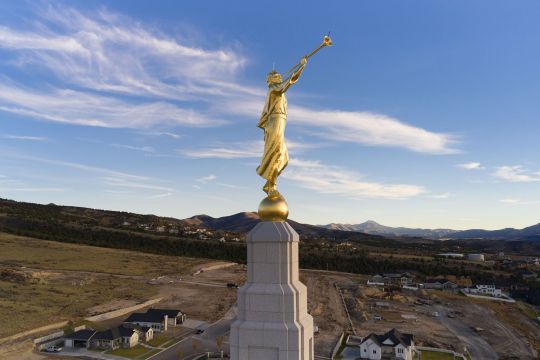

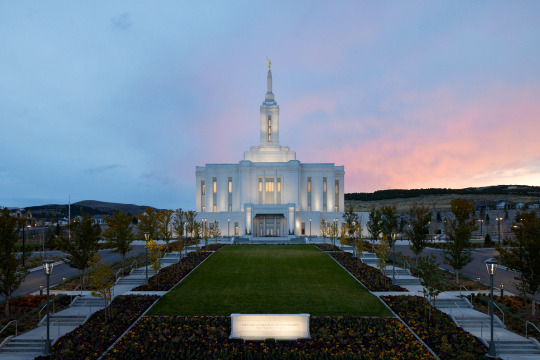
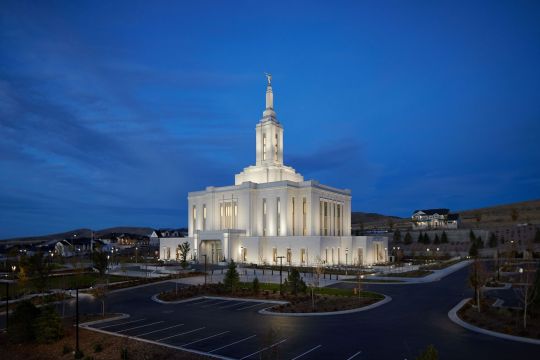





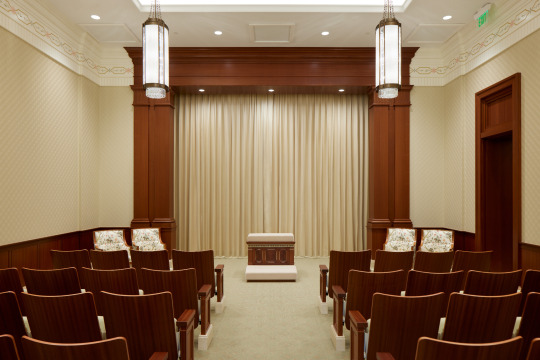
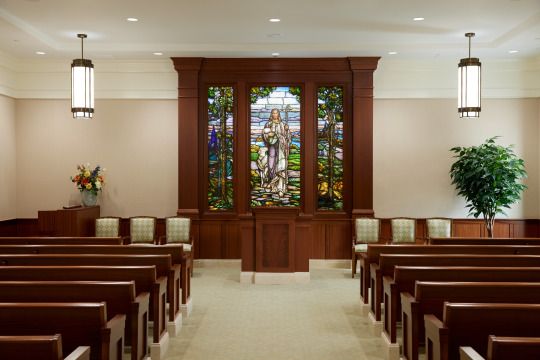




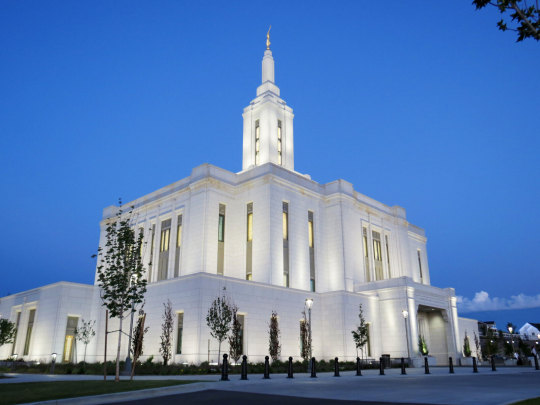

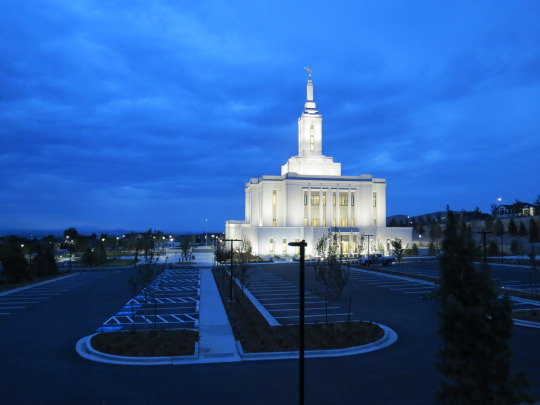
Pocatello Idaho Temple - Pocatello, ID
by: @FFKRArchitects @OklandConstruction @hblightinginc @wheelerelectricinc @landscapeforms @masonitedoors @holdmanstudiosglass @hblightinginc @GlassImagesCreationsInc
@churchofjesuschristtemples
Projeto do Templo
Exterior
O revestimento externo é de granito cinza claro chamado Temple White e é fornecido pela Best View em Fuzhou, China, e instalado pela IMS Masonry de Lindon, Utah. É jateado para obter um acabamento mais leve. A altura do templo medida no parapeito acima do terceiro andar é 68'10”. A altura até o topo da torre é de 182 pés. A altura até o topo do anjo Morôni é 194'6”.
A FFKR Architects projetou o vidro artístico com assistência técnica da Glass Images em Orem, Utah. O vidro artístico apresenta flores silvestres do deserto montanhoso de Idaho, incluindo a seringa, que é a flor do estado de Idaho, e a raiz amarga. As cores do vidro artístico são salva, representando a artemísia da região; ouro, representando as ervas selvagens que ficam douradas no verão; e rosa e coral, representando o pôr do sol, a flor amarga e a Colina Vermelha acima de Pocatello. O fabricante é Holdman Studios localizado em Lehi, Utah.
O paisagismo foi organizado em uma série de áreas formais de plantio apresentando um arranjo linear para complementar o templo. As plantações possuem uma hierarquia vertical que ascende em direção ao templo. As plantações foram selecionadas pelo seu interesse sazonal, belos padrões de floração, capacidade de atrair polinizadores como borboletas e adequação ao clima local. As árvores mais comuns no local são o bordo norueguês, a zelkova e a maçã silvestre Dolgo. Os arbustos utilizados no local foram selecionados por suas flores de cores vivas, como lavanda inglesa, amora-neve e hortênsia rainha da neve. Ao redor do perímetro do local haverá uma combinação de abetos brancos, abetos alpinos e pinheiros lodgepole, que foram selecionados entre as árvores que crescem nas montanhas ao redor da área. FFKR Architects de Salt Lake City, Utah, é o arquiteto paisagista.
Interior
O carpete e os tapetes têm um design congruente com os demais motivos e elementos de design do templo. Existem círculos, octógonos e elementos raking (listrados) complementados por florais que são nativos de Pocatello. Estes são o pincel indiano, o bitterroot e a seringa. As cores selecionadas entre verdes, dourados e corais são representativas das cores naturais da paisagem e dos vegetais de Pocatello.
A pedra principal, bege luna, é extraída de Belém, Israel. As bancadas e a fonte do edifício geral usam ouro do Saara, extraído do Paquistão. Duas pedras de destaque são utilizadas como detalhes nos pisos e balcões dos banheiros: uma pedra verde chamada costa esmerelda (um granito do Irã) e uma pedra vermelha chamada rojo alicante (um mármore da Espanha). O quarto da noiva usa duas pedras de destaque, sakura (um mármore da Turquia) e arandis (um granito da Namíbia). O mármore celestial e selador é chamado crema ella e é extraído na Turquia.
A pintura decorativa utiliza todas as mesmas cores verde, amarelo e coral, com adição de ouro. As folhas e pedais da seringa, da raiz amarga e do pincel indiano são complementados por linhas geométricas e cantos recortados/arredondados. Toda a pintura decorativa é aplicada em tetos e carpintarias para realçar e destacar designs de marcenaria e foi pintada por David Horne de Sandy, Utah.
A capela tem uma representação histórica em três partes do Salvador com ovelhas. Foi resgatado de uma igreja no leste dos Estados Unidos e restaurado. Foi criado por Frank Drehobl and Sons Art Glass em Chicago, Illinois, e restaurado pela Holdman Studios em Lehi, Utah.
As luminárias padrão são feitas de latão e vidro antigos, com cristais adicionados nas salas de ordenanças. Uma flor de seringa aparece nos cantos arredondados. As luminárias da sala celestial e de selamento foram projetadas de forma semelhante, mas inteiramente em latão e cristal, fabricadas pela HB Architectural Lighting no Bronx, Nova York, e instaladas pela Wheeler Electric de Idaho Falls, Idaho.
A espécie geral de madeira é sapele de corte esquartejado com alguns painéis de destaque em mogno com corte figurado, tingido para combinar com o sapele. Esses painéis ficam na frente do balcão de recomendações, bem como no púlpito da capela e nos altares da sala de instrução. A marcenaria foi fabricada e instalada pela Boswell Wasatch Architectural Woodwork de Springville, Utah.
As grades da pia batismal são construídas em alumínio padrão com painéis decorativos personalizados com acabamento inspirado em latão antigo. São painéis de destaque que apresentam as folhas da seringa e as pétalas das flores de raiz amarga, elementos locais de Pocatello. Nas grades fora da área da fonte, a tampa superior e a grade manual são feitas de sapele e fabricadas pela Smith Design de Gunter, Texas.
Os painéis das portas são trilhos de estilo padrão com painel embutido de madeira ou vidro artístico. As portas são de sapele da região do Rio Congo e são fabricadas pela Marshfield Door Systems de Marshfield, Wisconsin, e instaladas pela Beacon Commercial Door & Lock, localizada em Salt Lake City, Utah. O acabamento é em latão antigo no templo geral e em latão nas salas de selamento e celestes.
Todos os tetos são de construção padrão em drywall, painéis de teto acústicos de catálogo ou uma combinação de ambos. Todas as suítes administrativas, camarins e demais espaços secundários possuem painéis acústicos. Todos os tetos de drywall têm uma sanca adicionada de bordo pintado, choupo ou madeira semelhante. Os tetos são instalados pela Ed's Painting Contractor, Inc., de Blackfoot, Idaho.
0 notes
Text
Lecturas del Viernes de la 3ª semana de Cuaresma
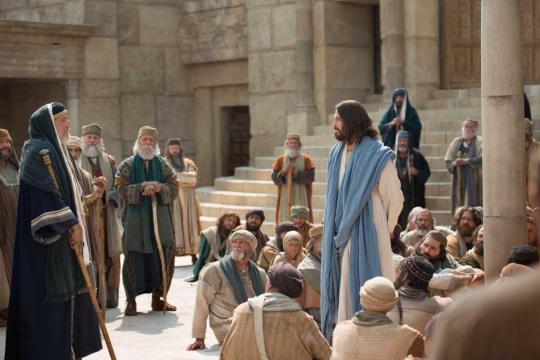
Lecturas del día 8 de Marzo de 2024
Primera lectura
Lectura de la profecía de Oseas 14,2-10
Esto dice el Señor Dios:
“Israel, conviértete al Señor, Dios tuyo,
pues tu maldad te ha hecho sucumbir.
Arrepiéntanse y acérquense al Señor para decirle:
‘Perdona todas nuestras maldades,
acepta nuestro arrepentimiento sincero,
que solemnemente te prometemos.
Ya no nos salvará Asiria,
ya no confiaremos en nuestro ejército,
ni volveremos a llamar “dios nuestro”
a las obras de nuestras manos,
pues sólo en ti encuentra piedad el huérfano’.
Yo perdonaré sus infidelidades, dice el Señor;
los amaré aunque no lo merezcan,
porque mi cólera se ha apartado de ellos.
Seré para Israel como rocío;
mi pueblo florecerá como el lirio,
hundirá profundamente sus raíces, como el álamo,
y sus renuevos se propagarán;
su esplendor será como el del olivo
y tendrá la fragancia de los cedros del Líbano.
Volverán a vivir bajo mi sombra,
cultivarán los trigales y las viñas,
que serán tan famosas como las del Líbano.
Ya nada tendrá que ver Efraín con los ídolos.
Yo te he castigado, pero yo también te voy a restaurar,
pues soy como un ciprés, siempre verde,
y gracias a mí, tú das frutos.
Quien sea sabio, que comprenda estas cosas
y quien sea prudente, que las conozca.
Los mandamientos del Señor son rectos
y los justos los cumplen;
los pecadores, en cambio, tropiezan en ellos y caen”.
Palabra de Dios
Salmo Responsorial
Sal 81 (80), 6c-8a.8bc-9.10-11ab.14.17
R./ Yo soy tu Dios, escúchame.
Oyó Israel palabras nunca oídas:
“He quitado la carga de tus hombros
y el pesado canasto de tus manos.
Clamaste en la aflicción y te libré.
R./ Yo soy tu Dios, escúchame.
Te respondí, oculto entre los truenos,
y te probé en Meribá, junto a la fuente.
Escucha, pueblo mío, mi advertencia.
¡Israel, si quisieras escucharme!
R./ Yo soy tu Dios, escúchame.
No tendrás otro Dios. Fuera de mi
ni adorarás a dioses extranjeros,
porque yo el Señor, soy el Dios tuyo,
que te sacó de Egipto, tu destierro.
R./ Yo soy tu Dios, escúchame.
¡Ojalá que mi pueblo me escuchara
y cumpliera Israel mis mandamientos!
Comería de lo mejor de mi trigo
y yo lo saciaría con miel silvestre”.
R./ Yo soy tu Dios, escúchame.
Evangelio
Lectura del santo evangelio según San Marcos 12,28b-34
En aquel tiempo, uno de los escribas se acercó a Jesús y le preguntó: “¿Cuál es el primero de todos los mandamientos?” Jesús le respondió: “El primero es: Escucha, Israel: El Señor, nuestro Dios, es el único Señor; amarás al Señor, tu Dios, con todo tu corazón, con toda tu alma, con toda tu mente y con todas tus fuerzas. El segundo es éste: Amarás a tu prójimo como a ti mismo. No hay ningún mandamiento mayor que éstos”.
El escriba replicó: “Muy bien, Maestro. Tienes razón, cuando dices que el Señor es único y que no hay otro fuera de él, y amarlo con todo el corazón, con toda el alma, con todas las fuerzas, y amar al prójimo como a uno mismo, vale más que todos los holocaustos y sacrificios”.
Jesús, viendo que había hablado muy sensatamente, le dijo: “No estás lejos del Reino de Dios”. Y ya nadie se atrevió a hacerle más preguntas.
Palabra del Señor
0 notes
Text
La Proclamación del Mesías Cristo Jesús.
Juan 1:19–34.
Hoy la gente busca seguridad en un mundo inseguro. Debemos señalarles a Cristo y mostrarles cómo Cristo satisface plenamente esa necesidad de seguridad. Cuando conocemos a Jesús, querremos presentárselos a otros. Hace más de veinte siglos apareció en Israel un hombre de singular aspecto que vivía en el desierto, tenía vestiduras extrañas y comía langostas y miel silvestre (Marcos…
View On WordPress
0 notes
Text
O motivo da criação do blog...
Oi, esse blog foi criado em homenagem a São Longuinho!

Ele é o santo dos objetos perdidos
"Longuinho" foi um dos soldados romanos destacados para acompanharem o castigo, a crucificação e a morte de Jesus. Chamava-se, na verdade, Longinus, nome que significa "Uma Lança". Por isso, acredita-se que ele tenha sido o soldado que perfurou com uma lança o lado de Jesus, de onde brotou sangue e água, como São João afirma em seu Evangelho (Jo 19,34). São Longuinho, como é conhecido, foi provavelmente o soldado que reconheceu Jesus como o "Verdadeiro Filho de Deus", logo após a morte do Mestre. Ele é citado pelos evangelistas São Mateus 27,54, São Lucas 23,47 e São Marcos 15,39 no momento da morte de Jesus.
História
Conta-se que Longinus era um soldado de baixa estatura que servia na alta corte de Roma antes de ser destacado para servir em Israel. Servindo na corte de Roma, ele vivia nas festas dos romanos. Por causa de sua baixa estatura, ele conseguia ver tudo o que se passava por baixo das mesas. Com isso ele achava vários pertences das pessoas e sempre devolvia os achados para seus donos. Daí surgiu sua fama de bom soldado e de sempre encontrar coisas perdidas. Esta fama do soldado Longinus, do mundo pagão, passou para o convertido São Longuinho.
Conversão de São Longuinho
O Evangelho de São João, testemunha ocular da morte de Jesus, diz que quando o soldado perfurou o lado do Senhor, dali saíram sangue e água. (Jo 19,34). A Tradição diz que essa água que saiu do lado de Cristo, respingou em Longinus e ele ficou curado de um problema que tinha nos olhos. E a água do lado de Cristo curou não só os olhos físicos de Longinus, como também, e principalmente, os olhos de sua alma, pois atribui-se a ele as palavras de um soldado presente na hora da morte de Jesus: "Verdadeiramente este homem era Filho de Deus". A partir de então, sua vida não foi mais a mesma. Tocado pela graça de Deus, ele se converteu, passou a acreditar em Jesus, e abandonou o exército romano. São Longuinho é uma prova do poder do amor e da misericórdia de Deus. Jesus curou a vida de um soldado que o matava.
Perseguidor se transforma em mártir
Após abandonar o exercito romano por causa de sua conversão, São Longuinho fugiu para Cesárea e, depois, Capadócia, hoje Turquia. Mas foi descoberto pelo Governador da Capadócia e denunciado a Pôncio Pilatos. No processo, foi acusado de desertor e condenado a pena de morte. Se ele renunciasse à sua fé em Jesus Cristo seria perdoado. Mas ele se manteve firme e não renegou Jesus Cristo. Por isso, foi torturado, teve seus dentes arrancados e sua língua cortada. Depois, foi decapitado. O soldado que ajudara na crucificação e morte de Jesus, tempos depois dava sua vida por causa do mesmo Senhor.
Canonização
São Longuinho foi canonizado pelo Papa Silvestre II, quase mil anos depois, no ano de 999. O processo de canonização já tinha caminhado bastante conforme os trâmites exigidos pela Igreja. Porém, vários documentos que faziam parte do processo, ficaram perdidos ao longo de anos. Então, o Papa pediu a intercessão do próprio São Longuinho para que o ajudasse a encontrar os documentos perdidos. E aconteceu que, pouco tempo depois, os documentos foram encontrados e a canonização aconteceu conforme a lei da Igreja manda que seja.
A lança de São longuinho
Existe uma lança numa igreja da cidade de Viena, na Áustria, que é considerada como sendo a lança de São Longuinho. É uma relíquia da Igreja muito venerada, pois teria sido a lança que perfurou o Sagrado Coração de Jesus e dele fez sair sangue e água.
Representação e festa
Nas pinturas e estátuas artísticas, São Longuinho é representado como um soldado com uma lança voltada para seus olhos. Sua festa é comemorada no dia 15 de março.
Devoção
Por causa da fama do soldado Longinus, espalhou-se a devoção de se rezar para São Longuinho pedindo para ele ajudar a encontrar objetos perdidos. Depois de encontrados, se dá três pulinhos e se faz uma oração para agradecer ao Santo. Os pulinhos podem ser dispensados. O importante é a fé e o belíssimo testemunho de vida de São Longuinho.
Oração a São Longuinho
"Ó glorioso São Longuinho, a vós suplicamos, cheios de confiança em vossa intercessão. Sentimo-nos atraídos a vós por uma especial devoção, sabemos que nossas súplicas serão ouvidas por Deus nosso Pai, se vós tão amado por Ele, nos fizer representar. Lembrai-vos São Longuinho, prodigiosamente tocado pela graça de Jesus agonizante, em sua última hora, que nunca se ouviu dizer que algum daqueles que recorrem a vossa proteção, fosse por vós desamparado. Assim, dignai-vos interpor em meu favor, vossa valiosa intercessão perante Deus, para que me conceda viver e morrer como verdadeiro cristão, e me auxilie a encontrar o objeto que tanto necessito. Amém. Dizer o nome do objeto que procura e rezar um Pai Nosso e uma ave Maria".
1 note
·
View note
Text
Sergio Vargas vuelve a la carga con "A Mi Manera"

"El Negrito de Villa", Sergio Vargas, está de regreso y luego de un proceso de selección, grabación y producción da a conocer su nuevo álbum "A Mi Manera" bajo el respaldo de J&N Records.
"Si alguien ha podido representar el amor por el merengue, mi patria, mi gente, he sido yo. Por eso presento este álbum como siempre me ha gustado 'A Mi Manera' y así quisiera que lo reciban" expresó el artista oriundo de Villa Altagracia, República Dominicana.
El ganador del Latin GRAMMY® 2021 en la categoría "Mejor Álbum de Merengue/Bachata con el disco "Sergio Vargas Es Merengue, ¿Algún Problema?" presenta esta nueva producción discográfica con 11 temas.
Su nuevo disco contiene canciones como "Baila Conmigo", "No seas tan cruel", "Todo me huele a ti", "Lo Eres Todo" y muchos más, al estilo inconfundible de este gran artista.
Su tema promocional "Baila Conmigo" fue compuesto por el productor Alex Mansilla y también por Ronny Cruz y el propio Sergio Vargas, además contó con la guitarra de Manuel Matos(Papo Guitarra), el bajo de Isaías Leclerc, en la tambora Joel Guzman, en las congas: Luis Mojica, en la Güira: Israel Simono, en los coros: René Geraldino, Dichens Salcedo, Katherine Ester Peña, en las trompetas: Rodhen Santos, en el saxofón alto: Nayade Macea y en el saxofón Tenor: Nayade Macea.
La canción "Lo Eres Todo" es una versión en merengue de la exitosa balada interpretada por la cantante española Luz Casal, séptimo disco puesto a la venta en 1995.
"El Pasado Es Pasado" es un tema escrito por el gran compositor Wilfran Castillo, interpretado en vallenato por Silvestre Dangondy lanzado en el 2008 en su álbum "El Original", además el nuevo álbum contiene una balada del gran Nelson Ned titulada "Las Cosas Cambiaran", lo cual evidencia el buen rango vocal que posee Sergio al interpretar piezas con el alma.
Read the full article
0 notes
Text
Abrir la PUTA PUERTA A CRISTO..O VA A REVENTAR LA DE EMERGENCIA.
X Cierto..ese 31_12_13 [q murió con 51 años SIMONE BOSE como presidente de UNIVERSAL MUSIC SPAIN de forma FULMINANTE x NEUMONIA tras posar con el VINILO del 20 aniversario del ESPIRITU DEL VINO de HEROES DEL SILENCIO cuya portada es una BOLA DE CRISTAL e incluye CULPABLE así como "Z"=FINAL=OMEGA] tras fotografiarme con la ESTATUA de JUAN PABLO II q estaba en el Paseo de la CASTELLANA o junto al Puente JUAN BRAVO..luego me infiltre en la SAN SILVESTRE VALLECANA desde la EMBAJADA DE EEUU donde en la NOCHEVIEJA'91 empotraron a mi hermano con un Citroën AX GT xq es un CRUZE LARGO y apuro el otro el SEMAFORO..tras negarle mi nuevo Ford FIESTA XR2i q me habían comprado x mi año 20 [28_11_1991] pues fue a PASTELERIAS "MALLORCA" para la cena..y si ves el coche piensas q murió pero le cambiaron toda la carrocería de FIBRA DE VIDRIO y luego si q tuvo UN SINIESTRO TOTAL al tirarse x un TERRAPLEN xq un coche venía de frente cuando iba con su ex_mujer pero cada uno en su coche..pues se compró 2 a la vez [Seat LEON y Ford PUMA] con los 100.000€ q le dio el BANK OF AME_RICA donde era al parecer una sindica_lista molesta.
X cierto.. esa nochevieja 2013 la pasaría en una disco junto al BERNABEU o x lo q tanto al ir como volver utilize su red WiFi q entonces estaba abierta .
También le dije ese 31_12_13 al malogrado INGLÉS MICHAEL ROBINSON q el día de REYES [6_1_14] se debería jugar REAL MADRID vs CELTA VIGO y así fue xq fue el partido en el q ANGEL DI MARIA se tocó los HUEVOS en REPULSA del BERNABEU cuando le daba la mano a JESE [q tiene tatuado ISRAEL x uno de sus hermanos o como se llama ISRAEL REINA o mi primo] al ser cambiado x BALE cuya primogénita es ALBA VIOLET..y fui corriendo al BERNABEU fotografiando enfrente de él un anuncio de la peli EL UNICO SUPERVIVIENTE [sobre guerra de Irak].. un año año exacto antes [6_1_13] q también fui al BERNABEU corriendo se jugo REAL MADRID VS REAL SOCIEDAD [como el partido suspendido el 12_12_04 en el min 88 x AVISO FALSO DE BOMBA siendo el portero de la Real SOCIEDAD "RIESGO"] en el q MOURINHO sentó x 1era vez a IKER CASILLAS poniendo en su lugar a ADAN [Nacido en MEJORADA=accidente de JUMBO "AVIANCA" día antes de mi año 13 y dos días antes de incendio de ROCKOLA con la SANTA SEDE siendo el anterior en actuar NICK CAVE cn su debut cd DESDE ELLA A LA ETERNIDAD y el cual grabó con KYLIE MINOGUE "WHERE THE WILD ROSE GROW" para su cd BALADAS DE ASESINSTOS" Y q ella metió en el cd PRINCESA IMPOSIBLE q en UK llevó su nombre para desmarcarse de la muerte de LADY DI pues el día de su funeral lanzo el single adelanto SOME KIND OF BLISS con video rodado en ESPAÑA saliendo pintada de VIVA LA LIBERTAD, ETA ASESINOS..siendo su novio en el video UN LADRON DE BANCOS y en la realidad el director de videos el frances STEPHANE SEDNAOUI q fotografió la zona cero el día posterior al 11_$ tras mandar email en directo de los Atentados q veía desde su apartamento mientras tenía embarazada a la Modelo francesa LAETITIA "CASTA"]..pero nada más empezó el partido ADAN hizo penalty y EXPULSION x lo q salio CASILLAS q no pudo pararlo titulando un periódico EL DESTINO SE BURLO DE MOURINHO

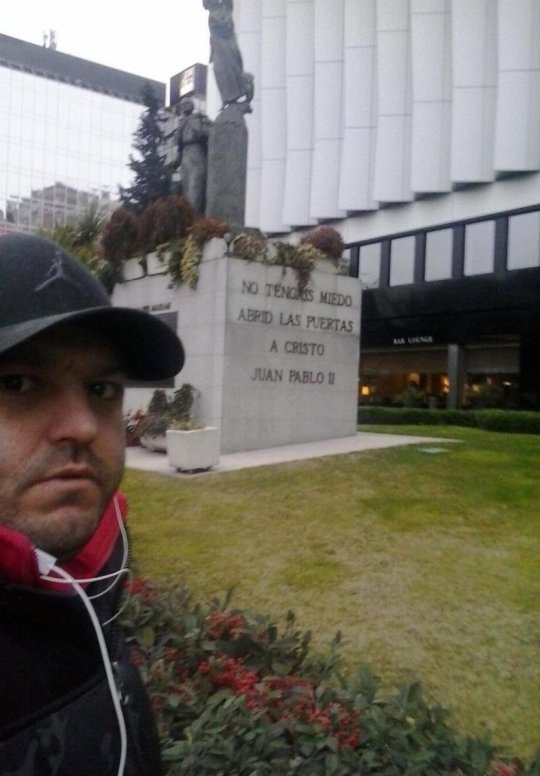

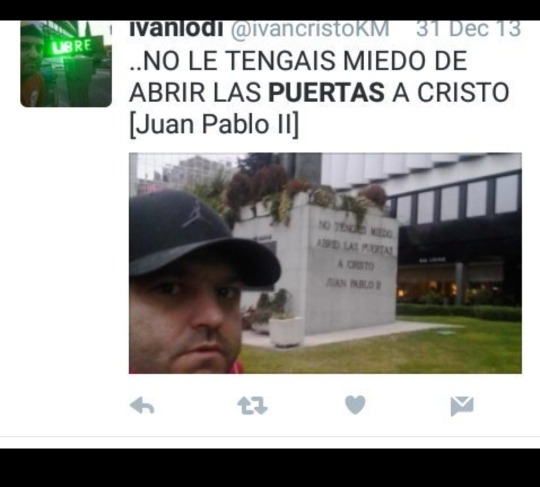
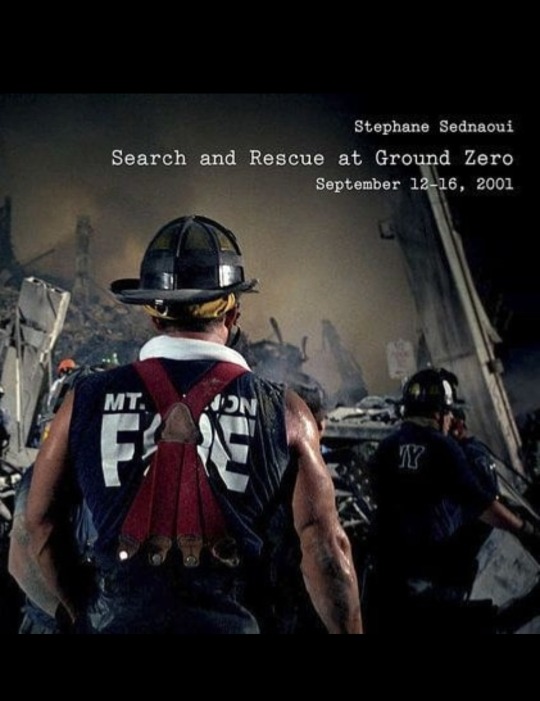
0 notes
Photo
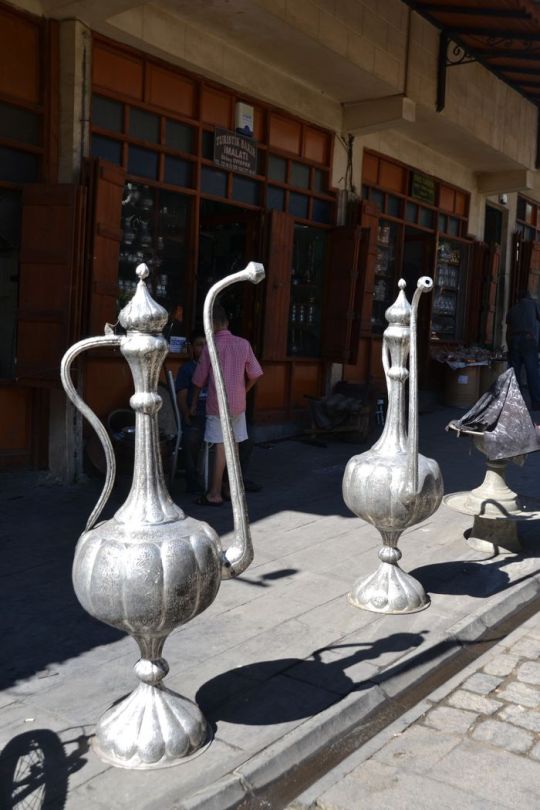
The present aspect of Paris
It is the history, not the present aspect of Paris, that is my present subject. I can remember Paris before the second empire began, before the new Boulevards, the strategical avenues, the interminable strait lines and the mechanical restorations of the last forty years; I can recall Paris in the days when it was for the most part a labyrinth of narrow, short, and often winding streets, with the sombre impasses, the irregular courts, and vistas of gable, attic, cornice, and turret that Meryon loved so well, and which Israel Silvestre has recorded with such patient care, and here and there a Gothic fragment in the simple state of natural decay and gradual incrustation. Since then I have watched for forty years the process of demo-lition and of restoration — the destruction, construction, reconstruction, on which such enormous sums, so much energy and skill, have been bestowed. I will try to avoid the dangerous field of art, of archaeology, of criticism and taste, treading my way warily per ignes suppositos cineri doloso. I will offer no opinion on these high matters of aesthetic judgment.
Let every man and woman judge for himself and herself whether new Paris be more beautiful than old Paris, if Haussmann had a finer genius than Pierre de Montereau and Philibert Delorme, if symmetrical boulevards and spacious avenues are a nobler sight than picturesque alleys — how far old buildings in decay should be ‘restored,’ and if it is good to sweep away whole parishes, churches, halls, mansions, and streets by the dozen, in order to make a barrack or a 1 place’ There is much to be said on both sides of the question private guide turkey: but I shall hold my peace on these profound aesthetic problems, for it is safer to interfere as arbiter in a dog-fight than to venture as umpire into the battle of the styles. My task is the plainer and humbler one of topography and the historic record. And my historic interests are impartial. I am seeking only to identify all memorable events of the past with their true local association. To my mind, the historic record covers all memorable things, all conspicuous names in the long evolution of the ages.
Studied Paris
I have in Paris an old and learned friend who for fifty years has lived in Paris, studied Paris, loved Paris, as only a Parisian can love his own city. His habit is to read every book he can meet with that relates to the topography of Paris, and then he walks about and verifies what he reads on the spot. I often stroll about the city with my friend and listen to him as he pours out volumes of topographic lore. We pass through the modern screen of Haussmannic Paris: we leave the boulevards and their roar, and in a moment we are again in the old world of the eighteenth or seventeenth century; just as when we turn out from Victoria Street into Deans’ Yard and the Abbey Cloister. So in Paris we pass swiftly beneath a portal and the roar ceases. The modern streets, to which our tourists confine their walks, form after all only a gigantic screen behind which much of old Paris still remains untouched.
‘ Here,’ said my old friend to me but a few years ago, ‘in this quiet street, the Rue d’ Argenteuil, with the rickety cour d’honneur, the bit of greenery and the bust, is the house where Corneille lived and died; close by, in the Rue St. Anne, is the house where Bossuet died.’ Both houses lay in streets between the Rue St. Honor# and the new – Avenue de VOpera: both have now disappeared. ‘ Come,’ said he, ‘into St. Roch. Here is the simple tomb of Corneille who lies beneath our feet; a medallion is all his monument; a little further on is an inscription to the memory of Bossuet.’ And as we pass down the steps of the church, ‘ Here,’ he says, ‘ was the famous battle between Bonaparte, the young soldier of the Convention, and the sections of Lepelletier, the counter Revolution of 1795.’
0 notes
Photo
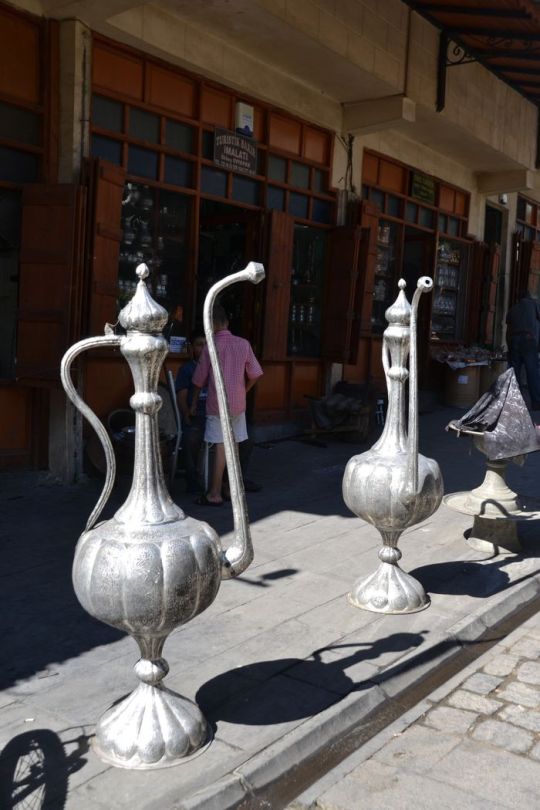
The present aspect of Paris
It is the history, not the present aspect of Paris, that is my present subject. I can remember Paris before the second empire began, before the new Boulevards, the strategical avenues, the interminable strait lines and the mechanical restorations of the last forty years; I can recall Paris in the days when it was for the most part a labyrinth of narrow, short, and often winding streets, with the sombre impasses, the irregular courts, and vistas of gable, attic, cornice, and turret that Meryon loved so well, and which Israel Silvestre has recorded with such patient care, and here and there a Gothic fragment in the simple state of natural decay and gradual incrustation. Since then I have watched for forty years the process of demo-lition and of restoration — the destruction, construction, reconstruction, on which such enormous sums, so much energy and skill, have been bestowed. I will try to avoid the dangerous field of art, of archaeology, of criticism and taste, treading my way warily per ignes suppositos cineri doloso. I will offer no opinion on these high matters of aesthetic judgment.
Let every man and woman judge for himself and herself whether new Paris be more beautiful than old Paris, if Haussmann had a finer genius than Pierre de Montereau and Philibert Delorme, if symmetrical boulevards and spacious avenues are a nobler sight than picturesque alleys — how far old buildings in decay should be ‘restored,’ and if it is good to sweep away whole parishes, churches, halls, mansions, and streets by the dozen, in order to make a barrack or a 1 place’ There is much to be said on both sides of the question private guide turkey: but I shall hold my peace on these profound aesthetic problems, for it is safer to interfere as arbiter in a dog-fight than to venture as umpire into the battle of the styles. My task is the plainer and humbler one of topography and the historic record. And my historic interests are impartial. I am seeking only to identify all memorable events of the past with their true local association. To my mind, the historic record covers all memorable things, all conspicuous names in the long evolution of the ages.
Studied Paris
I have in Paris an old and learned friend who for fifty years has lived in Paris, studied Paris, loved Paris, as only a Parisian can love his own city. His habit is to read every book he can meet with that relates to the topography of Paris, and then he walks about and verifies what he reads on the spot. I often stroll about the city with my friend and listen to him as he pours out volumes of topographic lore. We pass through the modern screen of Haussmannic Paris: we leave the boulevards and their roar, and in a moment we are again in the old world of the eighteenth or seventeenth century; just as when we turn out from Victoria Street into Deans’ Yard and the Abbey Cloister. So in Paris we pass swiftly beneath a portal and the roar ceases. The modern streets, to which our tourists confine their walks, form after all only a gigantic screen behind which much of old Paris still remains untouched.
‘ Here,’ said my old friend to me but a few years ago, ‘in this quiet street, the Rue d’ Argenteuil, with the rickety cour d’honneur, the bit of greenery and the bust, is the house where Corneille lived and died; close by, in the Rue St. Anne, is the house where Bossuet died.’ Both houses lay in streets between the Rue St. Honor# and the new – Avenue de VOpera: both have now disappeared. ‘ Come,’ said he, ‘into St. Roch. Here is the simple tomb of Corneille who lies beneath our feet; a medallion is all his monument; a little further on is an inscription to the memory of Bossuet.’ And as we pass down the steps of the church, ‘ Here,’ he says, ‘ was the famous battle between Bonaparte, the young soldier of the Convention, and the sections of Lepelletier, the counter Revolution of 1795.’
0 notes
Photo

The present aspect of Paris
It is the history, not the present aspect of Paris, that is my present subject. I can remember Paris before the second empire began, before the new Boulevards, the strategical avenues, the interminable strait lines and the mechanical restorations of the last forty years; I can recall Paris in the days when it was for the most part a labyrinth of narrow, short, and often winding streets, with the sombre impasses, the irregular courts, and vistas of gable, attic, cornice, and turret that Meryon loved so well, and which Israel Silvestre has recorded with such patient care, and here and there a Gothic fragment in the simple state of natural decay and gradual incrustation. Since then I have watched for forty years the process of demo-lition and of restoration — the destruction, construction, reconstruction, on which such enormous sums, so much energy and skill, have been bestowed. I will try to avoid the dangerous field of art, of archaeology, of criticism and taste, treading my way warily per ignes suppositos cineri doloso. I will offer no opinion on these high matters of aesthetic judgment.
Let every man and woman judge for himself and herself whether new Paris be more beautiful than old Paris, if Haussmann had a finer genius than Pierre de Montereau and Philibert Delorme, if symmetrical boulevards and spacious avenues are a nobler sight than picturesque alleys — how far old buildings in decay should be ‘restored,’ and if it is good to sweep away whole parishes, churches, halls, mansions, and streets by the dozen, in order to make a barrack or a 1 place’ There is much to be said on both sides of the question private guide turkey: but I shall hold my peace on these profound aesthetic problems, for it is safer to interfere as arbiter in a dog-fight than to venture as umpire into the battle of the styles. My task is the plainer and humbler one of topography and the historic record. And my historic interests are impartial. I am seeking only to identify all memorable events of the past with their true local association. To my mind, the historic record covers all memorable things, all conspicuous names in the long evolution of the ages.
Studied Paris
I have in Paris an old and learned friend who for fifty years has lived in Paris, studied Paris, loved Paris, as only a Parisian can love his own city. His habit is to read every book he can meet with that relates to the topography of Paris, and then he walks about and verifies what he reads on the spot. I often stroll about the city with my friend and listen to him as he pours out volumes of topographic lore. We pass through the modern screen of Haussmannic Paris: we leave the boulevards and their roar, and in a moment we are again in the old world of the eighteenth or seventeenth century; just as when we turn out from Victoria Street into Deans’ Yard and the Abbey Cloister. So in Paris we pass swiftly beneath a portal and the roar ceases. The modern streets, to which our tourists confine their walks, form after all only a gigantic screen behind which much of old Paris still remains untouched.
‘ Here,’ said my old friend to me but a few years ago, ‘in this quiet street, the Rue d’ Argenteuil, with the rickety cour d’honneur, the bit of greenery and the bust, is the house where Corneille lived and died; close by, in the Rue St. Anne, is the house where Bossuet died.’ Both houses lay in streets between the Rue St. Honor# and the new – Avenue de VOpera: both have now disappeared. ‘ Come,’ said he, ‘into St. Roch. Here is the simple tomb of Corneille who lies beneath our feet; a medallion is all his monument; a little further on is an inscription to the memory of Bossuet.’ And as we pass down the steps of the church, ‘ Here,’ he says, ‘ was the famous battle between Bonaparte, the young soldier of the Convention, and the sections of Lepelletier, the counter Revolution of 1795.’
0 notes
Photo
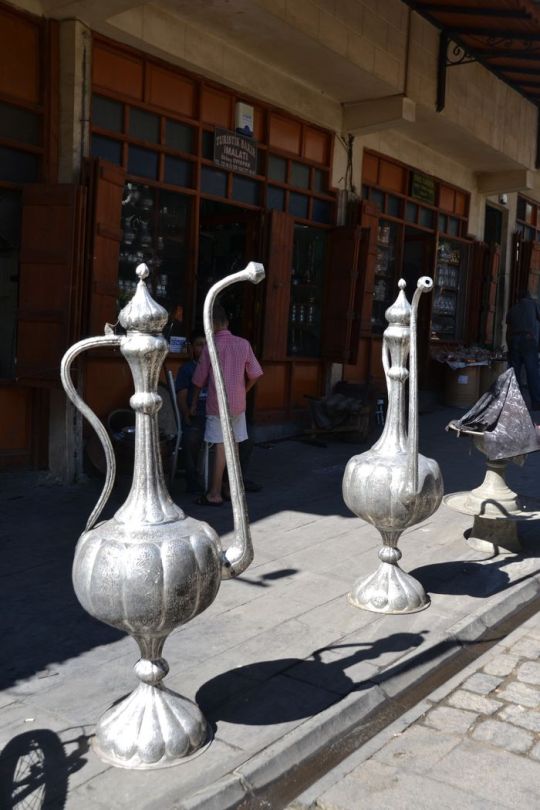
The present aspect of Paris
It is the history, not the present aspect of Paris, that is my present subject. I can remember Paris before the second empire began, before the new Boulevards, the strategical avenues, the interminable strait lines and the mechanical restorations of the last forty years; I can recall Paris in the days when it was for the most part a labyrinth of narrow, short, and often winding streets, with the sombre impasses, the irregular courts, and vistas of gable, attic, cornice, and turret that Meryon loved so well, and which Israel Silvestre has recorded with such patient care, and here and there a Gothic fragment in the simple state of natural decay and gradual incrustation. Since then I have watched for forty years the process of demo-lition and of restoration — the destruction, construction, reconstruction, on which such enormous sums, so much energy and skill, have been bestowed. I will try to avoid the dangerous field of art, of archaeology, of criticism and taste, treading my way warily per ignes suppositos cineri doloso. I will offer no opinion on these high matters of aesthetic judgment.
Let every man and woman judge for himself and herself whether new Paris be more beautiful than old Paris, if Haussmann had a finer genius than Pierre de Montereau and Philibert Delorme, if symmetrical boulevards and spacious avenues are a nobler sight than picturesque alleys — how far old buildings in decay should be ‘restored,’ and if it is good to sweep away whole parishes, churches, halls, mansions, and streets by the dozen, in order to make a barrack or a 1 place’ There is much to be said on both sides of the question private guide turkey: but I shall hold my peace on these profound aesthetic problems, for it is safer to interfere as arbiter in a dog-fight than to venture as umpire into the battle of the styles. My task is the plainer and humbler one of topography and the historic record. And my historic interests are impartial. I am seeking only to identify all memorable events of the past with their true local association. To my mind, the historic record covers all memorable things, all conspicuous names in the long evolution of the ages.
Studied Paris
I have in Paris an old and learned friend who for fifty years has lived in Paris, studied Paris, loved Paris, as only a Parisian can love his own city. His habit is to read every book he can meet with that relates to the topography of Paris, and then he walks about and verifies what he reads on the spot. I often stroll about the city with my friend and listen to him as he pours out volumes of topographic lore. We pass through the modern screen of Haussmannic Paris: we leave the boulevards and their roar, and in a moment we are again in the old world of the eighteenth or seventeenth century; just as when we turn out from Victoria Street into Deans’ Yard and the Abbey Cloister. So in Paris we pass swiftly beneath a portal and the roar ceases. The modern streets, to which our tourists confine their walks, form after all only a gigantic screen behind which much of old Paris still remains untouched.
‘ Here,’ said my old friend to me but a few years ago, ‘in this quiet street, the Rue d’ Argenteuil, with the rickety cour d’honneur, the bit of greenery and the bust, is the house where Corneille lived and died; close by, in the Rue St. Anne, is the house where Bossuet died.’ Both houses lay in streets between the Rue St. Honor# and the new – Avenue de VOpera: both have now disappeared. ‘ Come,’ said he, ‘into St. Roch. Here is the simple tomb of Corneille who lies beneath our feet; a medallion is all his monument; a little further on is an inscription to the memory of Bossuet.’ And as we pass down the steps of the church, ‘ Here,’ he says, ‘ was the famous battle between Bonaparte, the young soldier of the Convention, and the sections of Lepelletier, the counter Revolution of 1795.’
0 notes
Photo
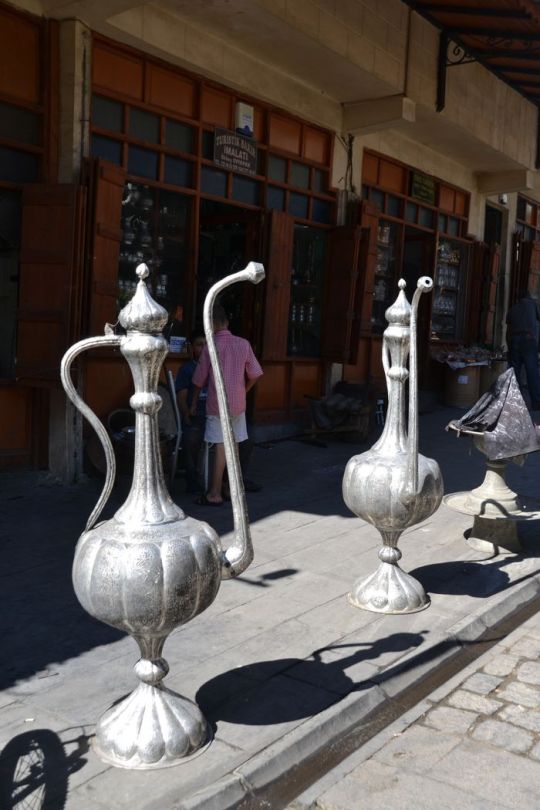
The present aspect of Paris
It is the history, not the present aspect of Paris, that is my present subject. I can remember Paris before the second empire began, before the new Boulevards, the strategical avenues, the interminable strait lines and the mechanical restorations of the last forty years; I can recall Paris in the days when it was for the most part a labyrinth of narrow, short, and often winding streets, with the sombre impasses, the irregular courts, and vistas of gable, attic, cornice, and turret that Meryon loved so well, and which Israel Silvestre has recorded with such patient care, and here and there a Gothic fragment in the simple state of natural decay and gradual incrustation. Since then I have watched for forty years the process of demo-lition and of restoration — the destruction, construction, reconstruction, on which such enormous sums, so much energy and skill, have been bestowed. I will try to avoid the dangerous field of art, of archaeology, of criticism and taste, treading my way warily per ignes suppositos cineri doloso. I will offer no opinion on these high matters of aesthetic judgment.
Let every man and woman judge for himself and herself whether new Paris be more beautiful than old Paris, if Haussmann had a finer genius than Pierre de Montereau and Philibert Delorme, if symmetrical boulevards and spacious avenues are a nobler sight than picturesque alleys — how far old buildings in decay should be ‘restored,’ and if it is good to sweep away whole parishes, churches, halls, mansions, and streets by the dozen, in order to make a barrack or a 1 place’ There is much to be said on both sides of the question private guide turkey: but I shall hold my peace on these profound aesthetic problems, for it is safer to interfere as arbiter in a dog-fight than to venture as umpire into the battle of the styles. My task is the plainer and humbler one of topography and the historic record. And my historic interests are impartial. I am seeking only to identify all memorable events of the past with their true local association. To my mind, the historic record covers all memorable things, all conspicuous names in the long evolution of the ages.
Studied Paris
I have in Paris an old and learned friend who for fifty years has lived in Paris, studied Paris, loved Paris, as only a Parisian can love his own city. His habit is to read every book he can meet with that relates to the topography of Paris, and then he walks about and verifies what he reads on the spot. I often stroll about the city with my friend and listen to him as he pours out volumes of topographic lore. We pass through the modern screen of Haussmannic Paris: we leave the boulevards and their roar, and in a moment we are again in the old world of the eighteenth or seventeenth century; just as when we turn out from Victoria Street into Deans’ Yard and the Abbey Cloister. So in Paris we pass swiftly beneath a portal and the roar ceases. The modern streets, to which our tourists confine their walks, form after all only a gigantic screen behind which much of old Paris still remains untouched.
‘ Here,’ said my old friend to me but a few years ago, ‘in this quiet street, the Rue d’ Argenteuil, with the rickety cour d’honneur, the bit of greenery and the bust, is the house where Corneille lived and died; close by, in the Rue St. Anne, is the house where Bossuet died.’ Both houses lay in streets between the Rue St. Honor# and the new – Avenue de VOpera: both have now disappeared. ‘ Come,’ said he, ‘into St. Roch. Here is the simple tomb of Corneille who lies beneath our feet; a medallion is all his monument; a little further on is an inscription to the memory of Bossuet.’ And as we pass down the steps of the church, ‘ Here,’ he says, ‘ was the famous battle between Bonaparte, the young soldier of the Convention, and the sections of Lepelletier, the counter Revolution of 1795.’
0 notes
Text
Lecturas del Sábado de la 2ª semana de Cuaresma
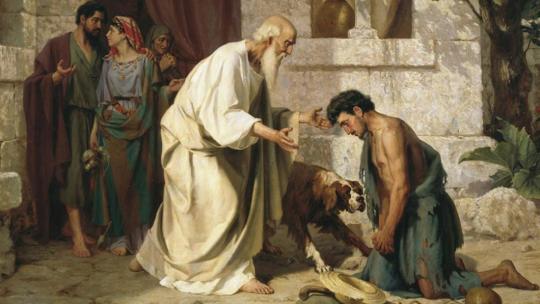
Lecturas del día 2 de Marzo de 2024
Primera lectura
Lectura de la profecía de Miqueas 7,14-15.18-20
Señor, Dios nuestro, pastorea a tu pueblo con tu cayado,
al rebaño de tu heredad,
que vive solitario entre malezas
y matorrales silvestres.
Pastarán en Basán y en Galaad,
como en los días de antaño,
como cuando salimos de Egipto
y nos mostrabas tus prodigios.
¿Qué Dios hay como tú, que quitas la iniquidad
y pasas por alto la rebeldía de los sobrevivientes de Israel?
No mantendrás por siempre tu cólera,
pues te complaces en ser misericordioso.
Volverás a compadecerte de nosotros,
aplastarás con tus pies nuestras iniquidades,
arrojarás a lo hondo del mar nuestros delitos.
Serás fiel con Jacob y compasivo con Abraham,
como juraste a nuestros padres en tiempos remotos,
Señor, Dios nuestro.
Palabra de Dios
Salmo Responsorial
Sal 103 (102), 1-2.3-4.9-10.11-12
R./ El Señor es compasivo y misericordioso.
Bendice al Señor, alma mía,
que todo mi ser bendiga su santo nombre.
Bendice al Señor, alma mía,
y no te olvides de sus beneficios.
R./ El Señor es compasivo y misericordioso.
El Señor perdona tus pecados
y cura tus enfermedades;
él rescata tu vida del sepulcro
y te colma de amor y de ternura.
R./ El Señor es compasivo y misericordioso.
El Señor no estará siempre enojado,
ni durará para siempre su rencor.
No nos trata como merecen nuestras culpas,
ni nos paga según nuestros pecados.
R./ El Señor es compasivo y misericordioso.
Como desde la tierra hasta el cielo,
así es de grande su misericordia;
como dista el oriente del ocaso,
así aleja de nosotros nuestros delitos.
R./ El Señor es compasivo y misericordioso.
Evangelio
Lectura del santo evangelio según San Lucas 15,1-3.11-32
En aquel tiempo, se acercaban a Jesús los publicanos y los pecadores para escucharlo. Por lo cual los fariseos y los escribas murmuraban entre sí: “Éste recibe a los pecadores y come con ellos”.
Jesús les dijo entonces esta parábola: “Un hombre tenía dos hijos, y el menor de ellos le dijo a su padre: ‘Padre, dame la parte de la herencia que me toca’. Y él les repartió los bienes.
No muchos días después, el hijo menor, juntando todo lo suyo, se fue a un país lejano y allá derrochó su fortuna, viviendo de una manera disoluta. Después de malgastarlo todo, sobrevino en aquella región una gran hambre y él empezó a padecer necesidad. Entonces fue a pedirle trabajo a un habitante de aquel país, el cual lo mandó a sus campos a cuidar cerdos. Tenía ganas de hartarse con las bellotas que comían los cerdos, pero no lo dejaban que se las comiera.
Se puso entonces a reflexionar y se dijo: ‘¡Cuántos trabajadores en casa de mi padre tienen pan de sobra, y yo, aquí, me estoy muriendo de hambre! Me levantaré, volveré a mi padre y le diré: Padre, he pecado contra el cielo y contra ti; ya no merezco llamarme hijo tuyo. Recíbeme como a uno de tus trabajadores’.
Enseguida se puso en camino hacia la casa de su padre. Estaba todavía lejos, cuando su padre lo vio y se enterneció profundamente. Corrió hacia él, y echándole los brazos al cuello, lo cubrió de besos. El muchacho le dijo: ‘Padre, he pecado contra el cielo y contra ti; ya no merezco llamarme hijo tuyo’.
Pero el padre les dijo a sus criados: ‘¡Pronto!, traigan la túnica más rica y vístansela; pónganle un anillo en el dedo y sandalias en los pies; traigan el becerro gordo y mátenlo. Comamos y hagamos una fiesta, porque este hijo mío estaba muerto y ha vuelto a la vida, estaba perdido y lo hemos encontrado’. Y empezó el banquete.
El hijo mayor estaba en el campo y al volver, cuando se acercó a la casa, oyó la música y los cantos. Entonces llamó a uno de los criados y le preguntó qué pasaba. Éste le contestó: ‘Tu hermano ha regresado y tu padre mandó matar el becerro gordo, por haberlo recobrado sano y salvo’. El hermano mayor se enojó y no quería entrar.
Salió entonces el padre y le rogó que entrara; pero él replicó: ‘¡Hace tanto tiempo que te sirvo, sin desobedecer jamás una orden tuya, y tú no me has dado nunca ni un cabrito para comérmelo con mis amigos! Pero eso sí, viene ese hijo tuyo, que despilfarró tus bienes con malas mujeres, y tú mandas matar el becerro gordo’.
El padre repuso: ‘Hijo, tú siempre estás conmigo y todo lo mío es tuyo. Pero era necesario hacer fiesta y regocijarnos, porque este hermano tuyo estaba muerto y ha vuelto a la vida, estaba perdido y lo hemos encontrado’ ”.
Palabra del Señor
1 note
·
View note